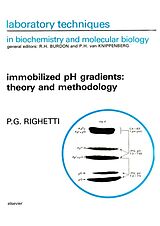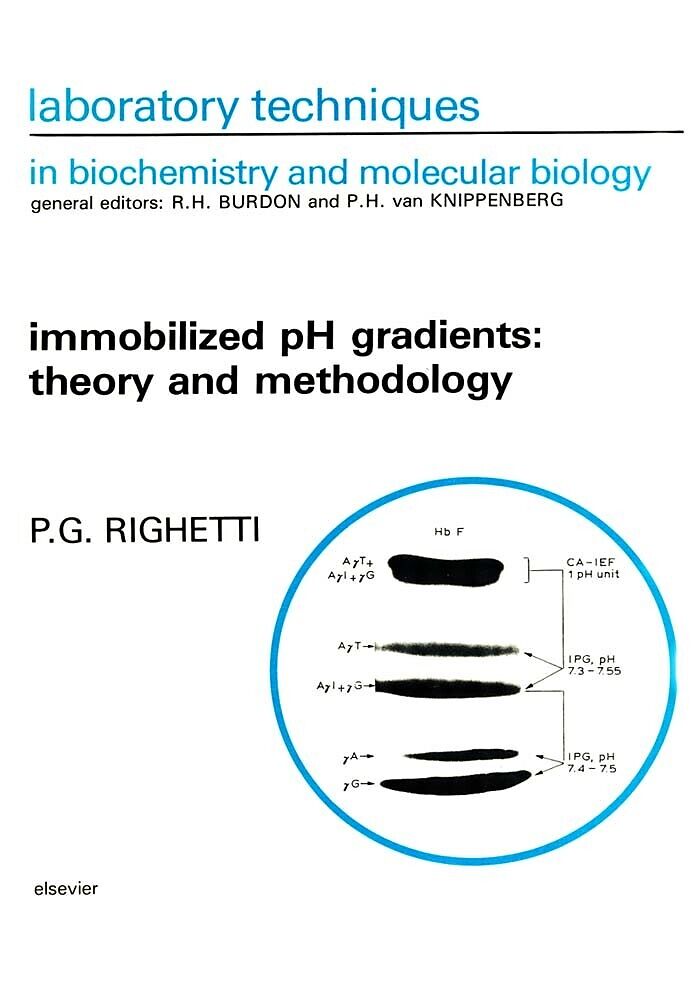Immobilized pH Gradients: Theory and Methodology
Format:
E-Book (pdf)
EAN:
9780080858890
Untertitel:
Theory and Methodology
Genre:
Chemie
Autor:
Pier Giorgio Righetti
Herausgeber:
Elsevier Science & Techn.
Anzahl Seiten:
396
Erscheinungsdatum:
07.02.1990
Immobilized pH gradients (IPG) represent the most advanced development of isoelectric focusing (IEF). Originally developed to overcome all the problems of IEF in soluble amphoteric buffers (CA) (such as pH gradient instability, complexation with CA chemicals, unreproducibility of pH gradients, protein precipitation at the pI), it turned out to be an entirely new technique, quite different in principle and operation from conventional IEF. The book is thus meant to bring the reader up to date with this fast developing field.
The book is divided into six chapters containing information on: detailed treatment of all the chemistry of the Immobiline chemicals; theory of pH gradient generation (computer simulations, tables with all the possible pH recipes); all analytical aspects of IPGs, including staining techniques, blotting etc.; two-dimensional maps, with a detailed treatise of advantages and limitations; preparative aspects of IPGs, including comparison with other preparative electrophoretic techniques; some examples of applications, including genetic and forensic analysis, blood polymorphism etc.
The book is extensive and up-to-date, while also extensively covering the theory. Clearly written, with easily accessible information, the volume is a worthy asset to the Lab. Techniques series.
Inhalt
(Chapter headings) List of abbreviations. Preface. Acknowledgements. Chapter 1. The Chemicals 1.1 Isoelectric focusing: an evolving concept 1.2 Comparison between carrier ampholyte and Immobiline chemicals 1.3 Structure and synthesis of acidic Immobiline 1.4 Structure and synthesis of basic Immobiline 1.5 Physico-chemical properties of Immobiline 1.6 Problems with the Immobiline chemicals 1.7 Storage of Immobiline: a new generation 1.8 Conclusions 2. Theory 2.1 Per aspera ad astra 2.2 Narow and ultra-narrow gradients 2.3 Extended pH gradients 2.4 How to deal with experimental errors 2.5 Ionic strength (I) 2.6 Buffering capacity (Beta) 2.7 Conductivity 2.8 Electroendomosis 2.9 The limits of IPGs: how to break barriers 2.10 Resolving power: Rilbe's equation 2.11 Alternatives for buffer focusing 2.12 Conclusions 3. Analytical IPGs 3.1 General considerations 3.2 Equipment 3.3 The polyacrylamide gel matrix 3.4 Gel preparation and electrophoresis 3.5 General experimental considerations 3.6 Blotting from Immobiline gels 3.7 Mixed-bed, CA-IPG gels 3.8 Effect of salts on protein patterns 3.9 General staining procedures 3.10 Trouble-shooting 3.11 Conclusions 4. Two-dimensional (2-D) maps 4.1 Introduction 4.2 Sample preparation 4.3 Sample solubilization 4.4 Choice of detergent 4.5 Radiolabelling techniques 4.6 The first (IPG) dimension 4.7 The second dimension 4.8 Reproducibility of spot positions in 2-D gels 4.9 Computer data acquisition 4.10 Silver staining 4.11 Blotting of spots from a 2-D map 4.12 General experimental aspects 4.13 Trouble shooting 4.14 Examples of some applications 4.15 To be or not to be? 5. Preparative aspects of Immobilized pH gradients 5.1 Introduction 5.2 Theory 5.3 Methodology 5.4 Immobiline canal technique 5.5 Reversible polyacrylamide gels 5.6 Segmented immobilized pH gradients 5.7 Alternative preparative methods 5.8 Conclusions 6. Some Applications of IPGs 6.1 Analysis of hemoglobins 6.2 Polymorphism of human proteins 6.3 Zymograms 6.4 Focusing at pH extremes 6.5 Conclusions. On protein heterogeneity.

Leider konnten wir für diesen Artikel keine Preise ermitteln ...
billigbuch.ch sucht jetzt für Sie die besten Angebote ...
Die aktuellen Verkaufspreise von 3 Onlineshops werden in Realtime abgefragt.
Sie können das gewünschte Produkt anschliessend direkt beim Anbieter Ihrer Wahl bestellen.
Loading...
Die aktuellen Verkaufspreise von 3 Onlineshops werden in Realtime abgefragt.
Sie können das gewünschte Produkt anschliessend direkt beim Anbieter Ihrer Wahl bestellen.
| # | Onlineshop | Preis CHF | Versand CHF | Total CHF | ||
|---|---|---|---|---|---|---|
| 1 | Seller | 0.00 | 0.00 | 0.00 |
